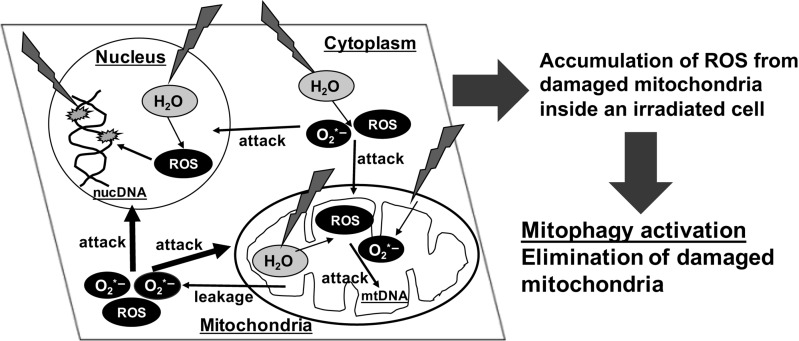Fig. 2.
IR-induced mitochondrial damages cause ROS production. When mammalian cells are exposed to IR, water radiolysis generates free radicals. Such free radicals attack both nucDNA and mtDNA, and proteins. The accumulation of damaged mtDNAs and mitochondrial proteins represses mitochondrial function, leading to continuous leakage of the mitochondrial ROS inside the whole cell and then amplification of damages to nucDNA and mitochondria. However, in order to avoid the accumulation of mitochondrial ROS and the subsequent damage to biomolecules in the cell, the damaged mitochondria are eliminated via mitophagy. Mitophagy acts as a mitochondrial quality control measure and prevents excess mitochondrial ROS accumulation in cells post-IR.

